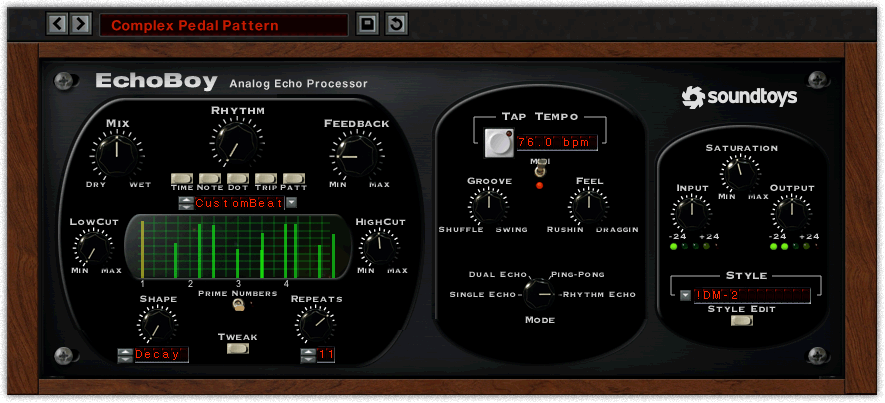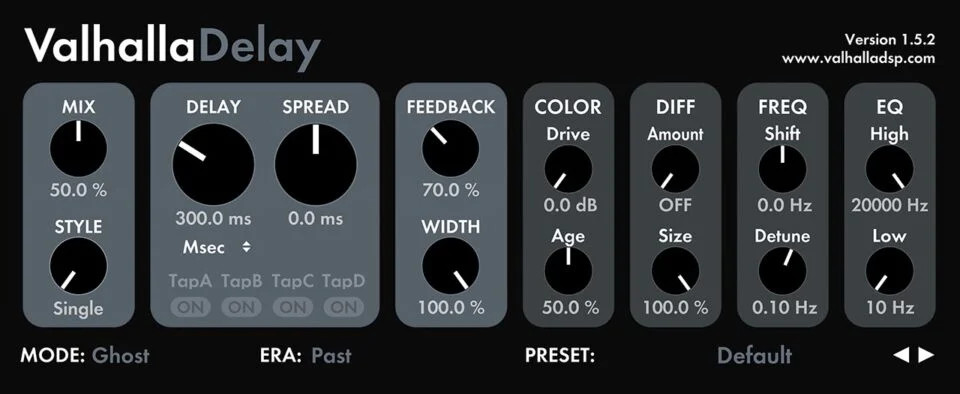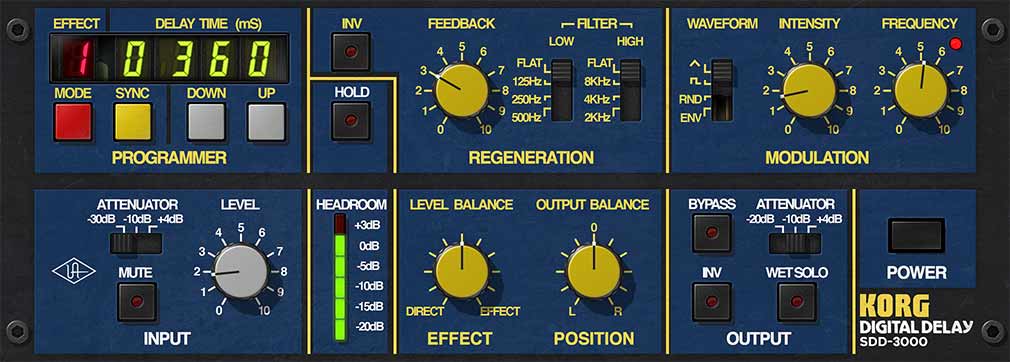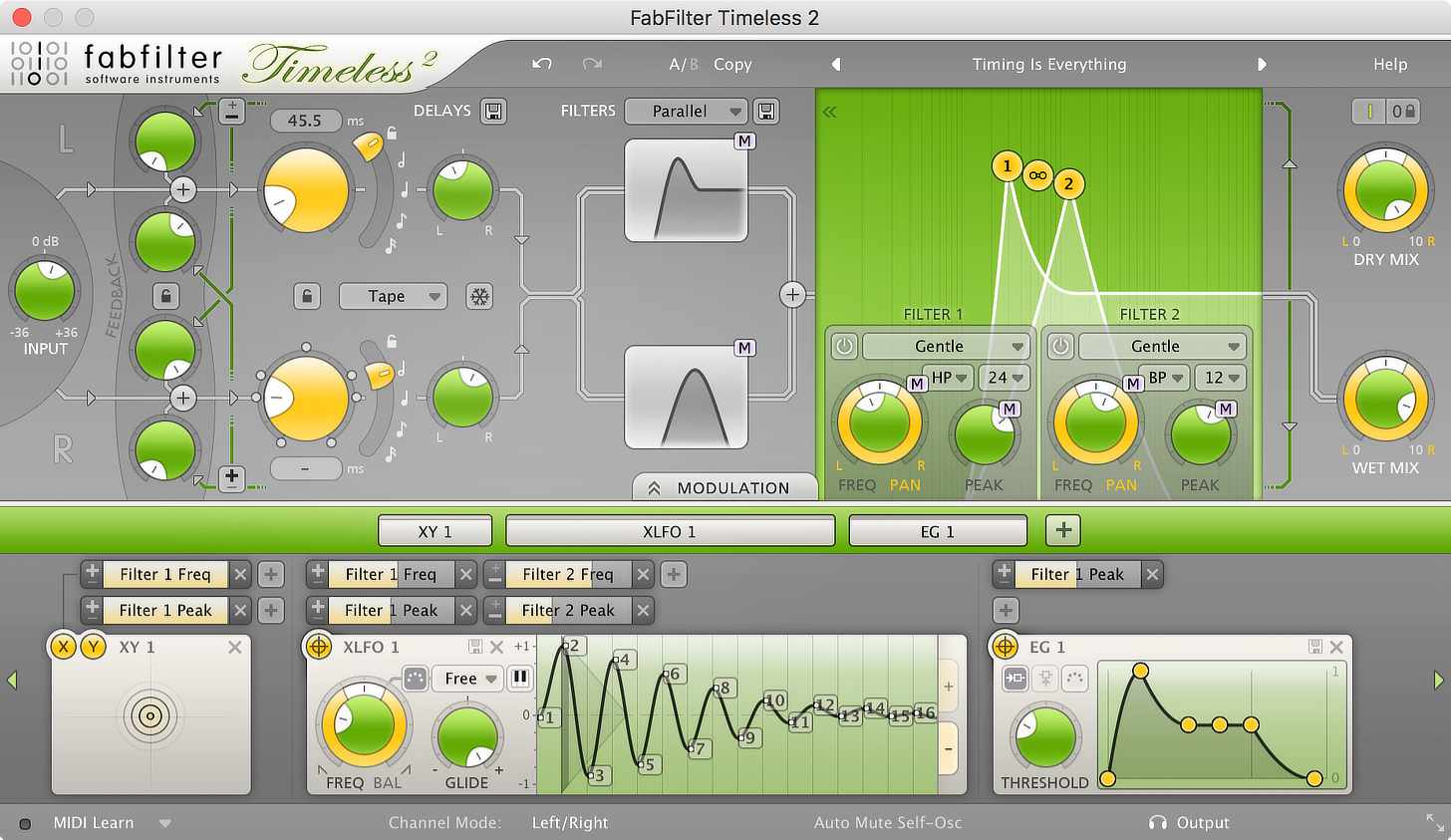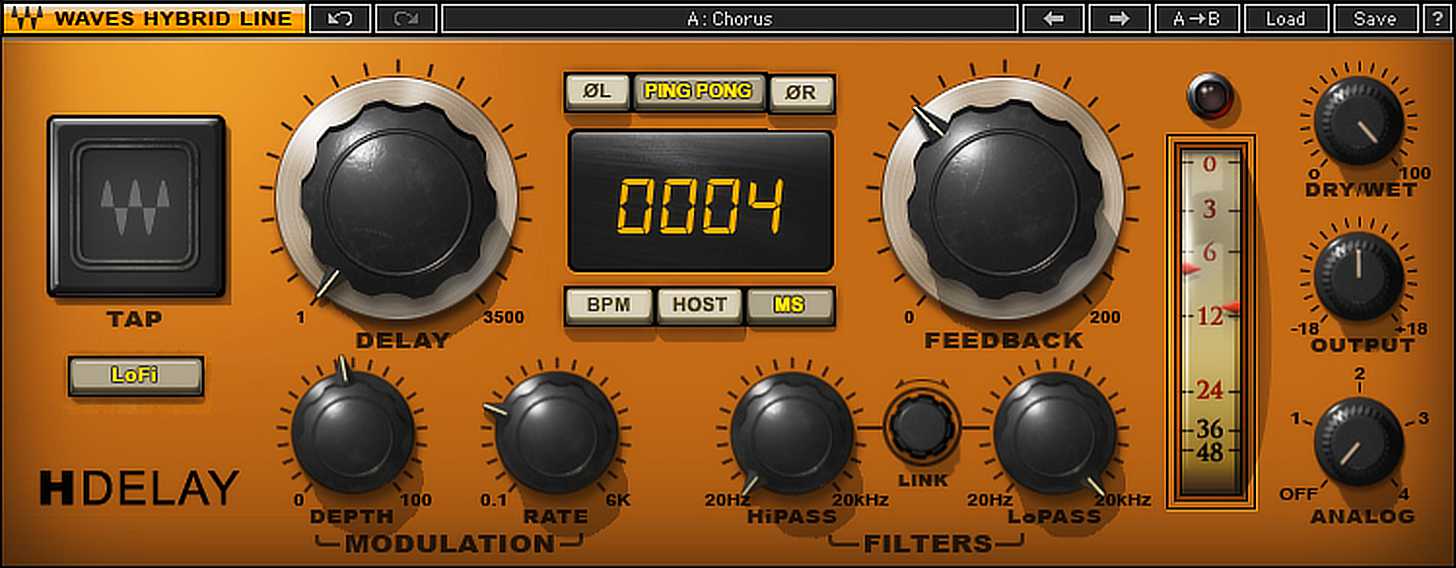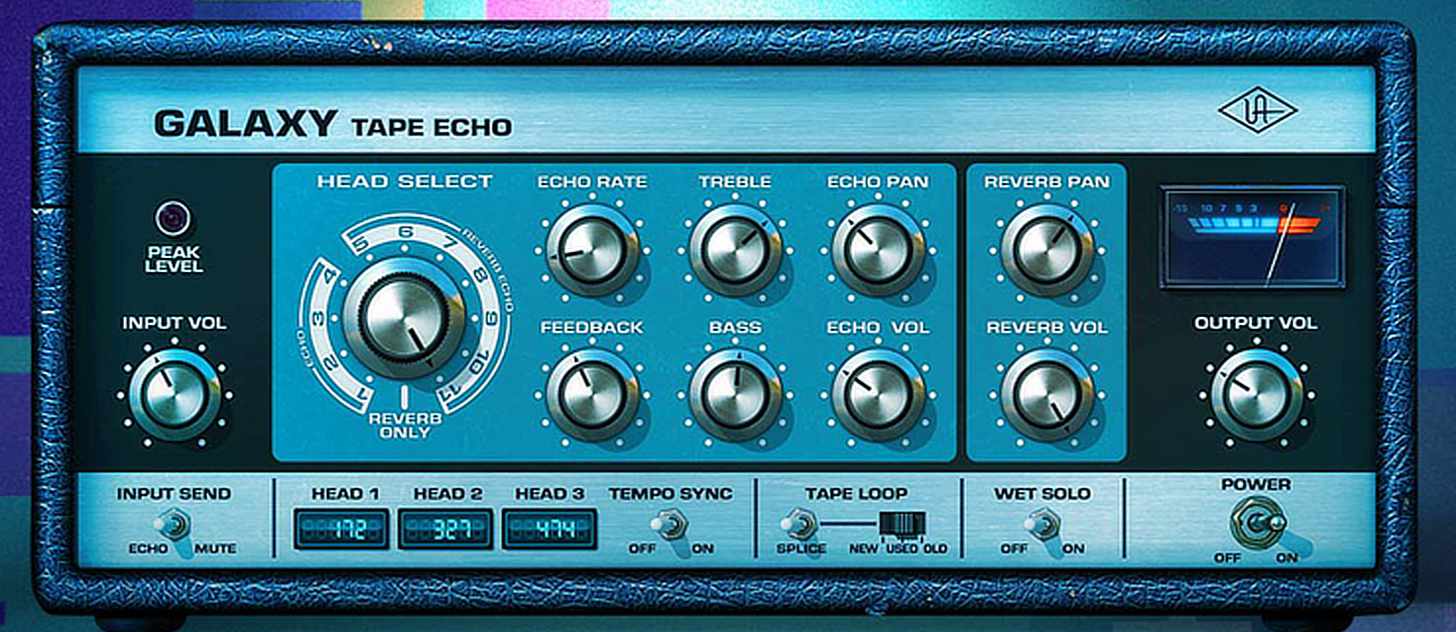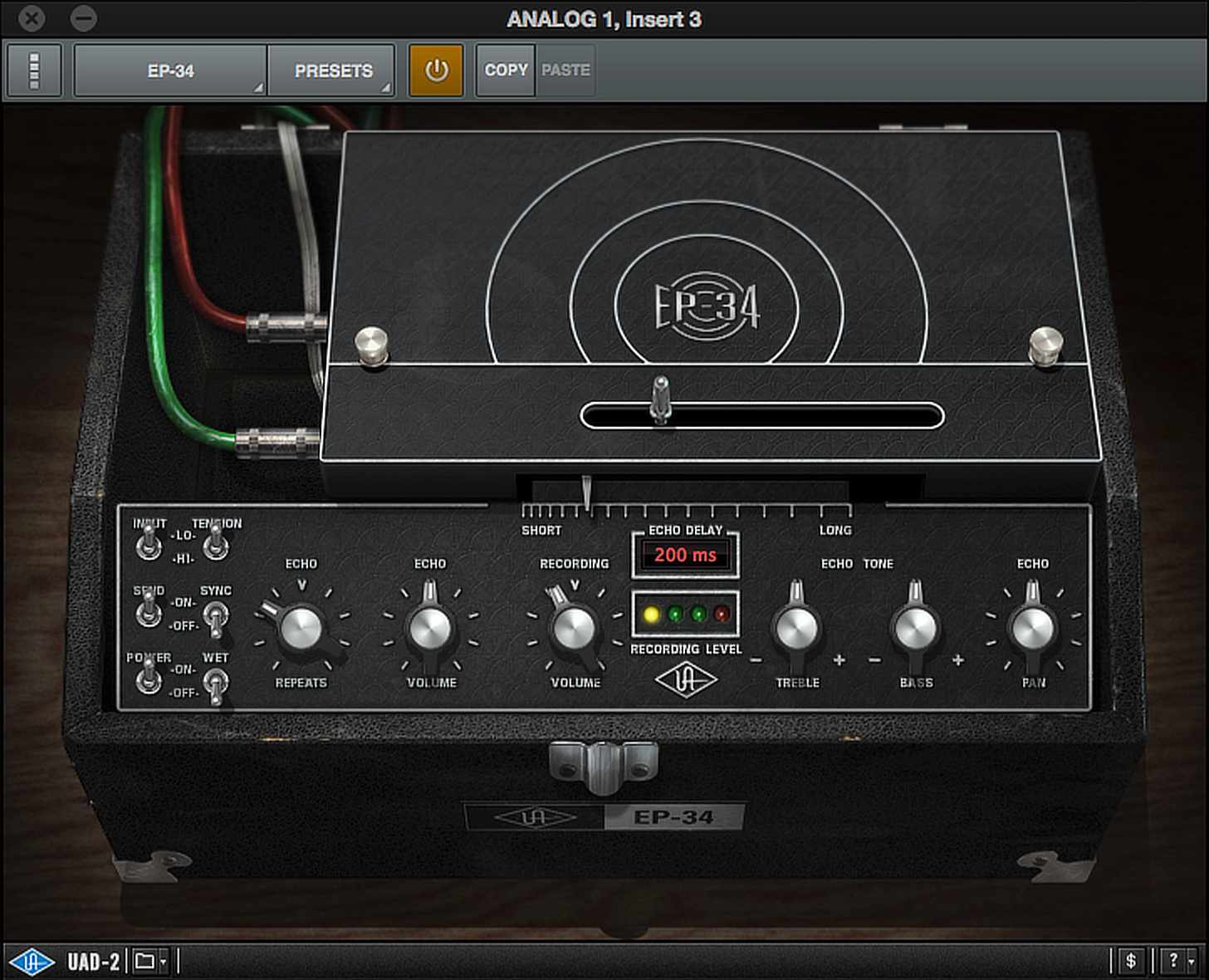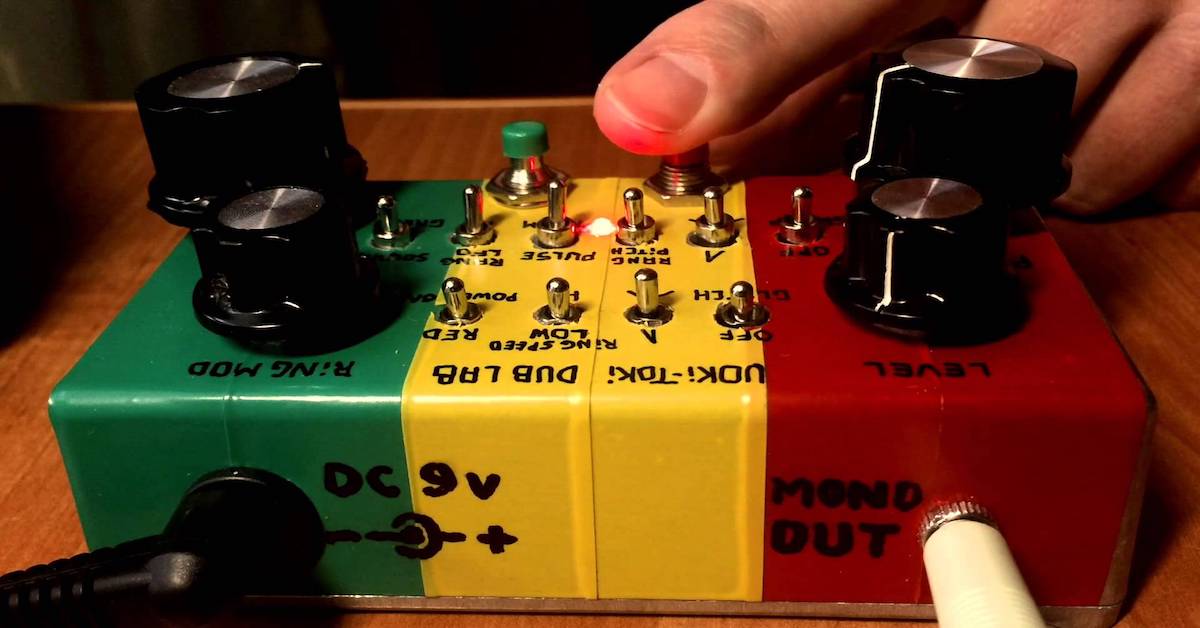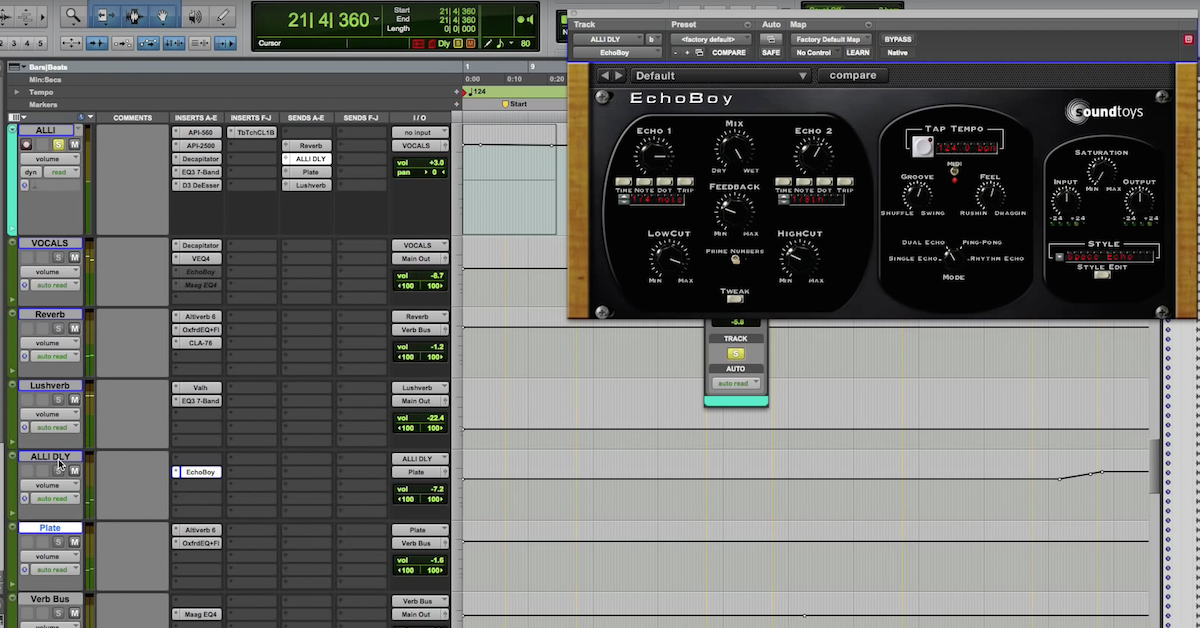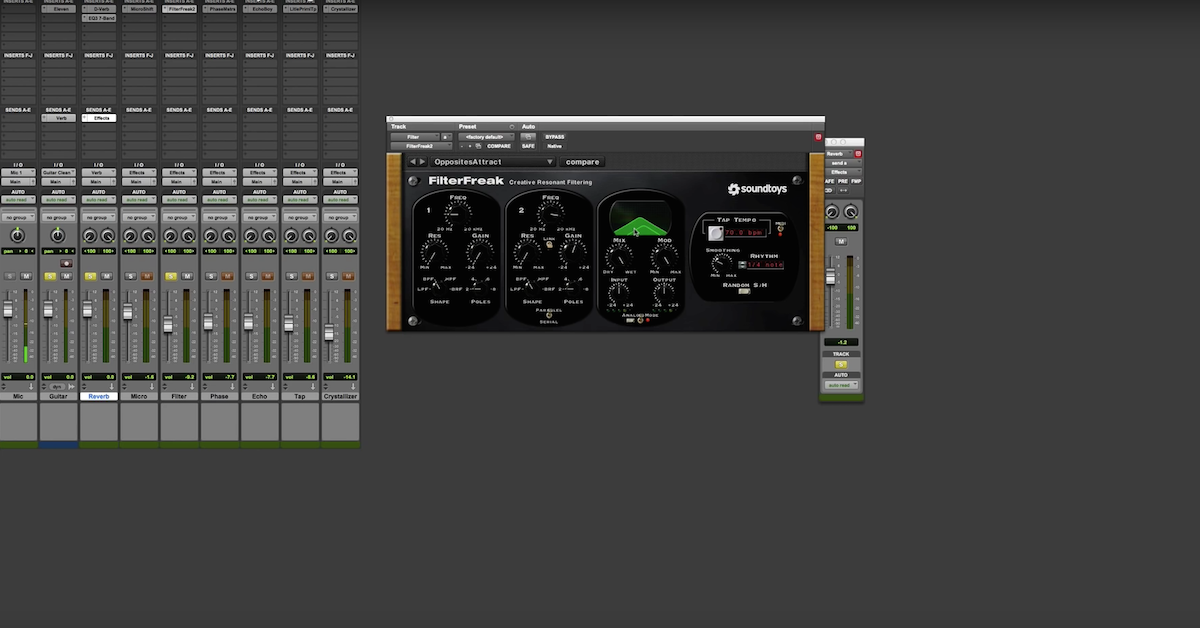11 Great Delay Plugins for Mixing (+ Mix Tips)
Article Content
When producing and mixing music, delay is such a versatile effect. When used subtly it can establish a sense of space in which tracks can sit, similar to reverb. It can be utilized creatively to create a droning ambient tail, you can use a single repeat set to a 40-100 millisecond delay to pay homage to early rock and roll or you can set up a ping-pong “throw delay” to make your pop mix sound more produced and “expensive.” These are just some of the many ways you can incorporate delay into your mixes.
The history of incorporating delay in music production is an interesting one, and can be traced back to the practice of using multiple magnetic tape recorders to create an echo effect. A signal being captured on one tape recorder was sent to another recorder, which was subsequently sent back to the first recorder. It would take a certain amount of time for that signal to be heard, hence the term delay. Eventually, players and engineers began using self-contained delay units such as the Binson Echorec, the Echoplex and the Roland Space Echo. Rack mountable studio gear came next, with processors such as the Korg SDD-3000 and Lexicon Prime Time Delay defining the sound of the 1980’s. Today, we benefit from software companies having created plugin emulations of vintage hardware delay units, while also creating digital tools that are far more complex and controllable than any mechanical delay hardware could ever be.
Here are my favorite plugins to use while mixing.
1. Soundtoys EchoBoy
While I utilize each and every delay plugin listed in this roundup, I could likely make do using only EchoBoy. It’s got everything you need in a delay and more. At the heart of EchoBoy are 30 distinct styles of delay which are based on classic gear, making this plugin a veritable history lesson on delay in addition to a fantastic music production utility. Combine these styles with the onboard high and low-cut filters, saturation and input & output controls, and you can sculpt the character of your repeats to be crystal clear, warbly, warm, dull, brash, etc. EchoBoy excels at creating delay on virtually any type of signal including vocals, synths, guitars and beyond. Sometimes I’ll even use EchoBoy only as a “color unit,” as the saturation and filters sound fantastic when combined with the unique timbers of the 30 styles.
Mix Tip
Automate EchoBoy’s parameters. This is something I’ll do with all types of plugins to give my processors a greater degree of musicality, and EchoBoy is no exception. I’ll map parameters (usually the feedback, mix and filters) to my MIDI controller, and “play” the delay like it’s a musical instrument.
2. Valhalla Delay
I’m a huge fan of all the plugins from Valhalla DSP. They sound fantastic, the user interfaces are clean looking and they are designed in such a way to encourage a sense of play. Valhalla Delay features 10 different delay modes including tape, HiFi, digital and more. It also has controls over modulation, drive, EQ and more for fine-tuning the sounds of your delay.
Mix Tip
Valhalla Delay is actually an excellent learning tool if you want to know more about delay and how specific controls affect the overall sound. When you switch modes or hover over any other parameter of Valhalla Delay, the plugin offers you a handy block of text towards the bottom of the GUI which explains the parameter. Also, don’t sleep on FreqEcho, which is a simple but free delay plugin available from Valhalla DSP.
3. UAD Korg SDD-3000
Whereas the aforementioned delay plugins allow you to access many different delay types, the Korg SDD-3000 from Universal Audio is a faithful emulation of a hardware unit that was released in 1982 and popularized by The Edge (guitarist for U2). The SDD-3000 is no one-trick-pony though, as it has plenty of useful controls under its (digital) hood: the input can be pushed to create a driven sound that ranges from warm to crunchy, the regeneration section features low and high filters to tweak the timbre of your repeats and the modulation section can be utilized to give your repeats a subtle warble or a wild, alien-like effect.
Mix Tip
Although I use the SDD-3000 on everything from gently chorused vocals to warm and warbly keyboards, I also love using it when producing music. This is especially true when writing guitar parts that emulate the trademark sound that U2’s The Edge popularized during the band’s most influential era.
4. FabFilter Timeless 2
If you like going deep-diving into plugins and mangling your signals beyond recognition, Timeless 2 might be just the delay for you. If you simply want to place your sound in a pleasant, believable-sounding echo, Timeless 2 can handle that as well, but I’ve found myself playing around with this plugin for extended periods of time — sculpting strange, hyper-resonant repeats that can transform the original sound entirely.
Mix Tip
When using Timeless 2, you might get the best (or at least the most interesting-sounding) results if you don’t think of it as just a delay plugin. I recently used it on a synth part and created a subtly-modulating drone that I would automate during specific parts of the song. While it sounded nothing like the original signal, it still worked like a charm.
5. Waves H-Delay
While H-Delay doesn’t offer the wide range of flexibility and sonic textures as some of the other aforementioned delay plugins, for a warm and somewhat “grainy,” & pleasant sounding delay, you won’t be disappointed by this offering from Waves. It’s got modulation, filters and plenty of other features that keep me using it on sources including vocals, guitar, synth pad and more.
Mix Tip
For me, “Lo-Fi” mode is where it’s at. It rolls off the high end of the repeats, and helps the delay sit back in the mix a bit more. For a vintage-inspired slap-back style delay with minimal repeats, H-Delay shines.
6. Soundtoys PrimalTap
This offering from Soundtoys serves as a nice compliment to EchoBoy. It looks, sounds, and operates a lot differently than the company’s flagship delay plugin. Primal Tap emulates the Prime Time Delay, which is a heralded hardware unit from the 1980s. It features a low frequency oscillator (LFO) which allows you to add some really interesting movement and chorus-like character to your repeats.
Mix Tip
I reach for PrimalTap when I am feeling more creative and ready to spend some time really designing my delay sound. The “freeze” function is great for grabbing a slice of the incoming audio signal, and then either tastefully looping it or utterly destroying it using the plugin’s onboard modulation controls.
7. UAD Galaxy Tape Echo and/or EP-34 Tape Echo
Both of these plugins are modeled after tape-based hardware units and although they each have their own sonic vibe and unique functionality, I use them often when I want to create gritty, vintage-inspired delays. The Echoplex (EP-34) is outstanding for long, dreamy feedback and sees a lot of use on lead vocals and electric guitar. The Galaxy Tape Echo is an emulation of a famous Roland hardware unit, and can be driven into a wild, howling feedback. It also features a thick, cloudy reverb, making it effective for special effects.
Mix Tip
Since I am including two plugins here, I’d like to take the opportunity to mention that on any given mix, I’ll likely be using multiple different delays including several instances on a singular source. Depending on the needs of the production, I may have a quarter note delay, a ping pong delay, a slap-back and more. As I mentioned, delay can be similarly useful to reverb in establishing a sense of space in which tracks can exist. Usually, using only one delay won’t achieve the desired effect.
8. Unfiltered Audio Sandman Pro
Available from Plugin Alliance (I have it as part of their mix and master bundle, which I strongly recommend) the Sandman Pro is a tweaker’s delight delay plugin. It comes with an abundance of controls and esoteric features that can, quite frankly, seem a bit overwhelming at first. So if you’re looking for a delay unit that can help you achieve a simple slapback or ping pong with only a few clicks of the mouse, you might want to look elsewhere. This is absolutely not meant to be a knock on the plugin. For anyone willing to take on a steeper learning curve, the forward-thinking minds at Houston, Texas and Fairfield, California-based Unfiltered Audio have created a delay that can generate rapidly evolving textures, aggressive warbly repeats, howling feedback and accomplish plenty of other wildly expressive sounds that can’t be created with any other software that I’ve used.
I can’t quickly or simply cover the entire feature set of Sandman Pro, but the secret sauce of this plug-in is the “sleep mode” which can be used to generate granular loops that the user can then modulate, mangle with noise, re-pitch, reverse and much more. It truly needs to be used (and heard) to be believed!
Mix Tip
While there are plenty of musical applications for Sandman Pro, I could absolutely see using this plugin for sound design in film, television and game audio. Don’t “sleep” on this delay if you’re hoping to transform your source material beyond all recognition.
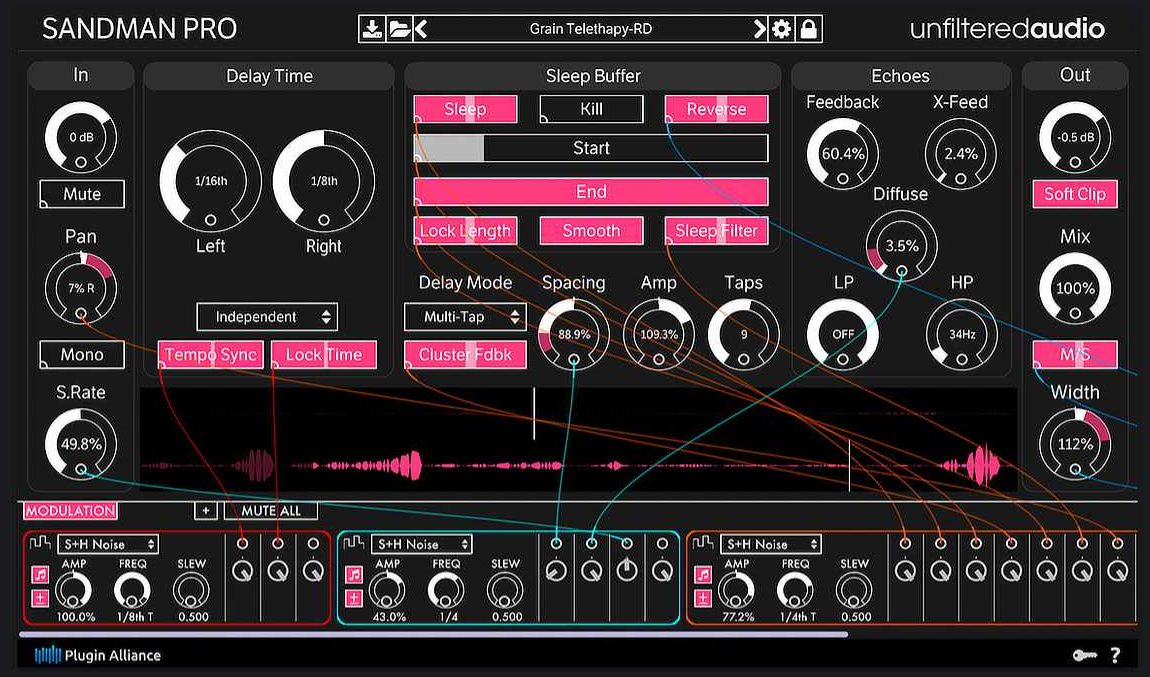
9. D16 Group Repeater
Mix Tip
Between the different delay models, the color knob and driving the input, this plugin can add plenty of harmonic flavor to your tracks, whether they be guitar, vocals or otherwise. Utilize the handy tonal shaping options found within Repeater to sculpt some seriously mojo-filled delays.
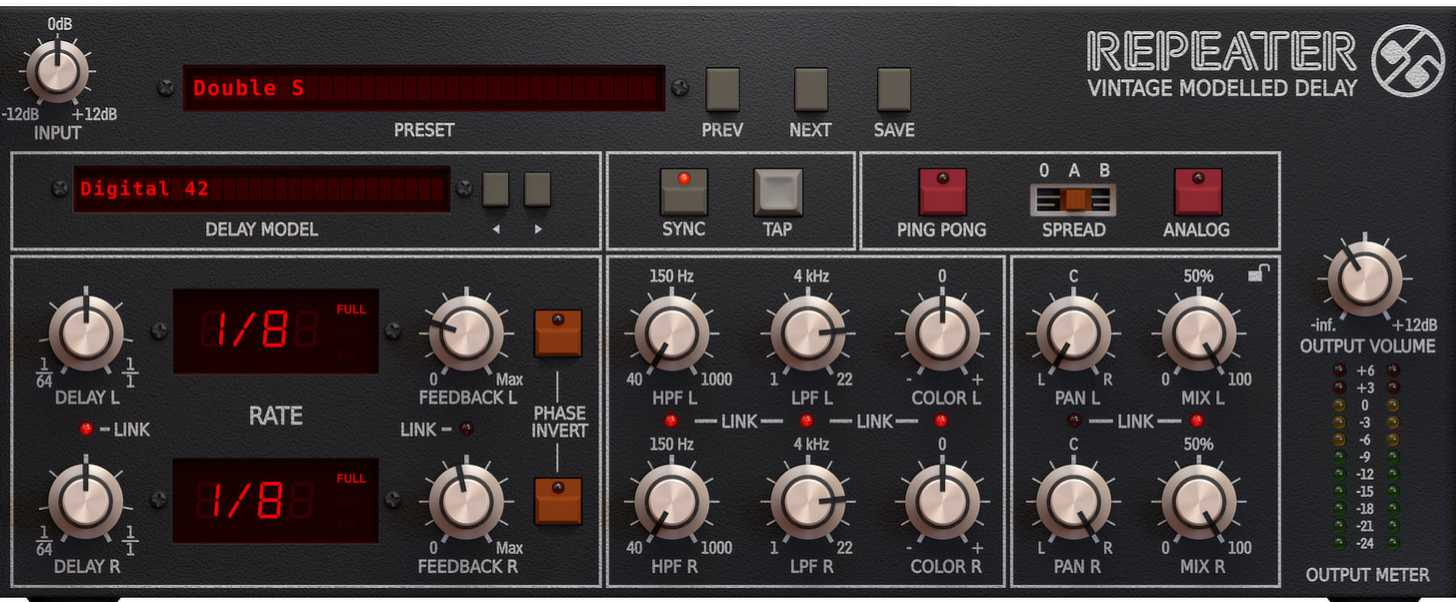
10. Klevgrand Modley
Mix Tip
The three racks are only the tip of the iceberg with Modley. Use the freeze function to capture a moment in time and loop it as long as you desire, tweak the modulation section to impart pitch variations and depth onto your repeats, and prevent your howling feedback from getting completely out of hand by engaging the limiter towards the end of the signal chain.
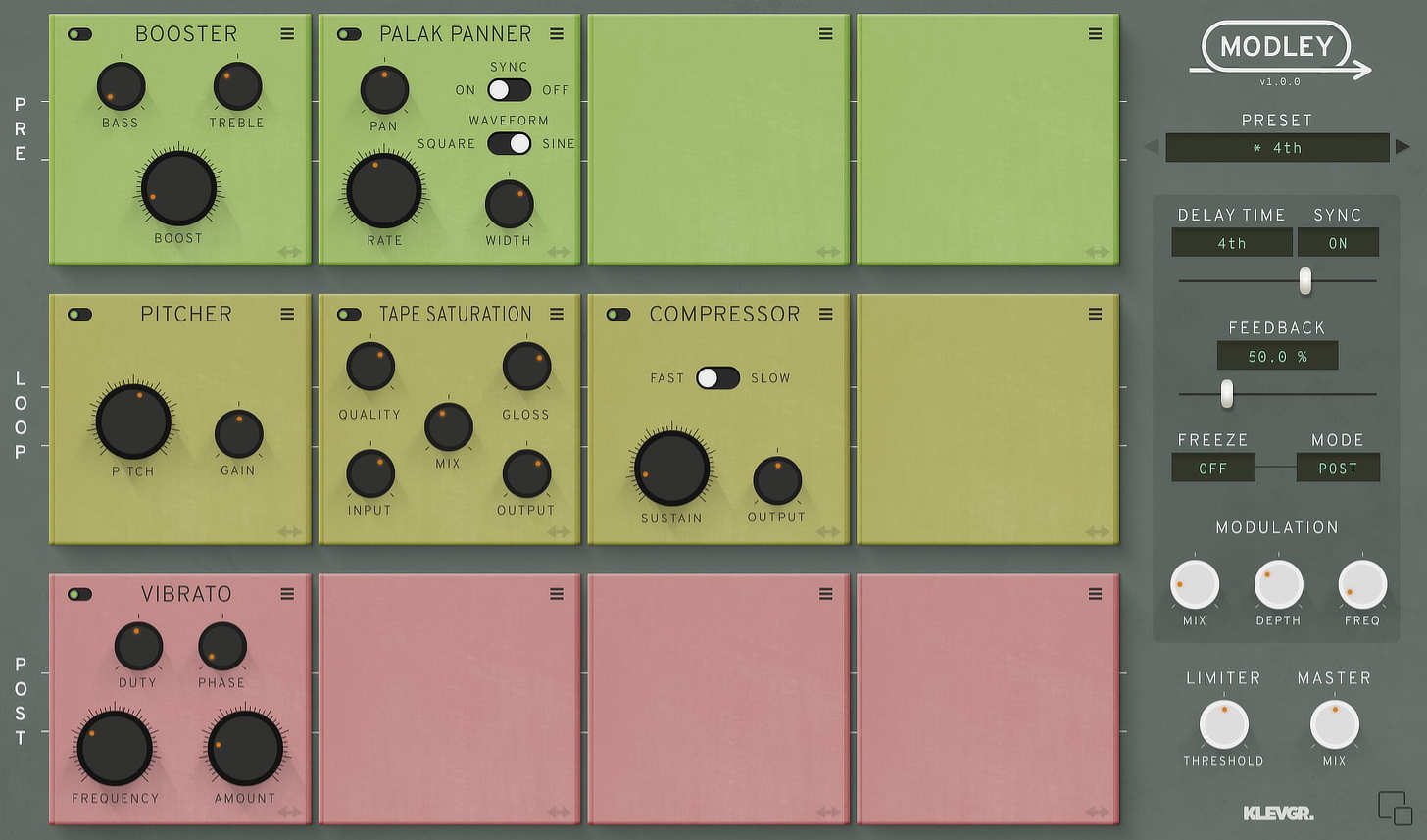
11. Whatever Stock Delay Comes With Your DAW
As with any type of processor, you don’t need to empty your wallet to achieve quality results when mixing with delay. It’s far more important to understand how to incorporate delay into your productions than to own every plugin currently available on the market. So while I’d much rather utilize some of my favorite delay plugins that have been mentioned so far, I could certainly make do using the stock delays that come with the DAWs that I use most regularly: Pro Tools, Logic Pro X and Ableton Live. Logic Pro X actually comes with 5 separate delay plugins that each offer their own flavor and functionality.
Mix Tip
Another useful tip when mixing with delay is to apply additional processing to the delay. Many delay plugins come with features like onboard filters, saturation, etc. and I certainly take advantage of them when mixing. Additionally, I’ll often insert effects after my delay plugins to give the delay whatever it needs to work well within the context of the mix. Sometimes I’ll use compression to even out the level of the repeats, saturation to add some bite or chorus to give my delay some width.
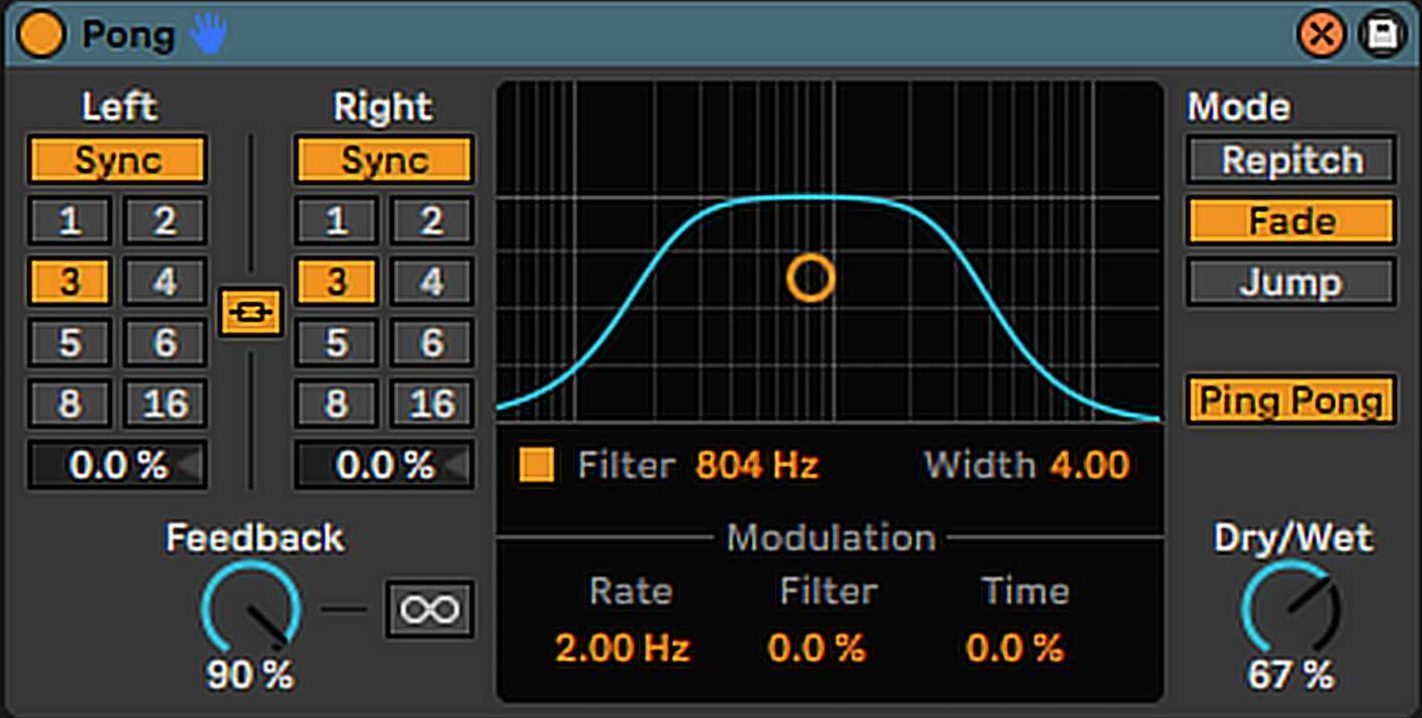
Ableton Live’s stock Delay
Here are some audio examples:
^ No delay
^ Valhalla Delay – General Setting
^ Valhalla Delay – Synthy setting
^ Korg SDD-3000 – Slight Warbly Delay
^ UAD EP-34 – Warm Tail
^ Soundtoys Primal Tap – Freeze
^ FabFilter Timeless 2 – Entrophy Setting
^ Soundtoys EchoBoy – Space Echo
^ Soundtoys Echoboy – Binsonette

